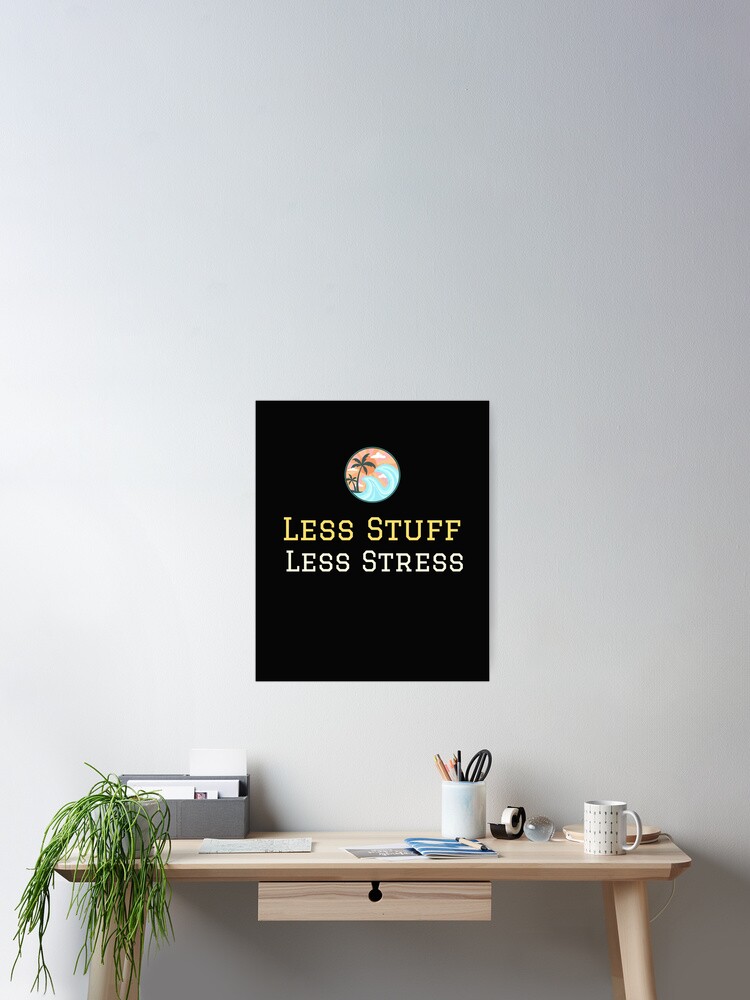
Since becoming a minimalist, I have to say that I love getting rid of stuff, the fewer possessions I have the more at peace I am, but I was not always like this. Most of us start out as “collectors” when we move into our own homes, we have a list of things we want to buy and over the years we continue to accumulate more and before we know it we are overwhelmed by our stuff.
That is where I found myself several years ago, I had way too much, a lot of it packed away in closets, things I had not used in years. I had an awakening and felt the need to purge everything and I did for the most part. I rented a dumpster and spent the next few weeks throwing away and donating much of what I owned and when I was done, I felt a huge sense of peace and relief. I didn’t know I would feel that way because I didn’t realize the effect all those things had on me. Clutter causes stress and we may not even realize where the stress is coming from until the clutter has been cleared.
Jerry Seinfeld does a hilarious bit on shopping, accumulating, and clutter.
In an interview Seinfeld said “We have too many things. That’s the problem. There are too many things. You have things. I have things. How many times do you want more things? I don’t like having too many things. I’m a “thrower-outer” That’s my personality type. I’m a “thrower-outer”. If I have something, I really don’t want it”. He compared storage as paying rent to visit your incarcerated possessions.
Studies show that Americans spend around $39 billion annually on rented storage space because they are out of room at home.
A 2011 Princeton University study found “physical clutter in your surroundings competes for your attention, resulting in decreased performance and increased stress.”
According to a survey done by Gladiator, almost 1 in 4 Americans cannot park their car in their garage because it is too full of clutter.
When people consider purging and minimalizing, they may feel overwhelmed and not sure where to begin. Don’t let that stop you. You don’t have to do it all at once, you can start small and work slowly toward achieving your goal.
It’s all about deciding what is important to you, keeping what you need and love and getting rid of the rest.
Eliminate the easy things first
If you are not sure where to begin get rid of the easy things first, paper clutter, the contents of the junk drawer, a cabinet or closet, kid’s toys and clothes, anything that you can easily get rid of without much thought.
Donate duplicates
Go through your home and look for duplicates, anything you have more than one of. Get rid of any duplicates you don’t need, how many winter coats, pairs of scissors or can openers do you need? Most of those items are not being used and are just taking up space.
Add purging to your calendar
Set a calendar reminder to purge and declutter, daily, weekly, monthly whatever fits your schedule and then take that time to tackle a drawer, a closet or an entire room.
Use spare time
If you find yourself with spare time tackle a little job, just 15 minutes of purging will help you to slowly make progress.
Don’t accumulate more stuff
The last thing you want to do when you are trying to declutter and eliminate is to bring more in. Be mindful about anything you bring into your home, ask yourself is this necessary? Will it serve a purpose? Can I live without it? When you become more intentional with your actions it keeps you focused. If you do bring in something new implement a policy that something else must go, one in, one out.
Make donating meaningful
If you struggle with letting go of personal or sentimental items, consider giving them to friends and family instead of a local thrift shop or donation center. Giving items to loved ones can make it easier to let go.
Don’t confuse decluttering with moving items to storage
Minimalists don’t need a lot of storage space, we don’t keep things we never use or don’t need. Clear out totes, closets, the garage and other spaces and get rid of anything you don’t need or use.
The clothing rule
Most of us have clothing we have not worn in years, maybe it is outdated, uncomfortable or no longer fits, there is no reason to keep those things. Sort through your closets and dressers and make three piles, keep, donate, trash. Sort your clothing into the appropriate piles. Anything usable can be donated, anything that is damaged can be thrown away. Keep only the clothing you love and wear. If you buy something new make it a rule to get rid of something you have, one item in, one item out.
Use it or lose it
If you have not used an item for more than a year, ask yourself do you really need it? This can apply to anything you own, clothing, kitchen gadgets, toys, books, etc. If something is not serving a purpose, there is no reason to keep it.
Go big
Once you get started, set aside time to declutter and organize an entire room. Focus on that room until it is completely done. This gives you a sense of accomplishment and motivates you to continue.
